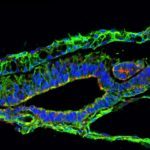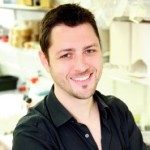Link to Pubmed [PMID] – 15843802
Nature 2005 Jun;435(7044):954-8
In the embryo and in the adult, skeletal muscle growth is dependent on the proliferation and the differentiation of muscle progenitors present within muscle masses. Despite the importance of these progenitors, their embryonic origin is unclear. Here we use electroporation of green fluorescent protein in chick somites, video confocal microscopy analysis of cell movements, and quail-chick grafting experiments to show that the dorsal compartment of the somite, the dermomyotome, is the origin of a population of muscle progenitors that contribute to the growth of trunk muscles during embryonic and fetal life. Furthermore, long-term lineage analyses indicate that satellite cells, which are known progenitors of adult skeletal muscles, derive from the same dermomyotome cell population. We conclude that embryonic muscle progenitors and satellite cells share a common origin that can be traced back to the dermomyotome.

